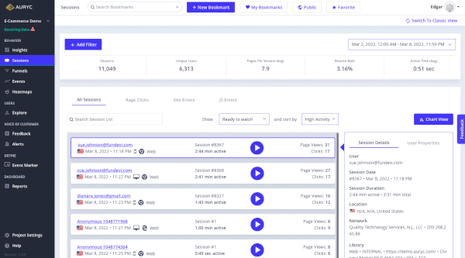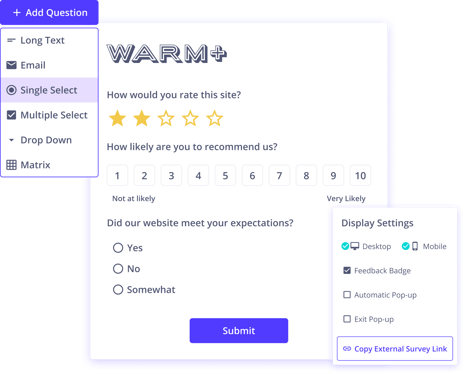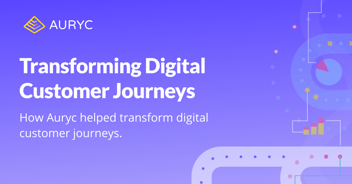I arrived. I saw. I added to the cart.
Online shopping has never been easier. In the post-pandemic era, it has become essential, with Euromonitor claiming that by 2025, e-commerce will be a trillion-dollar industry. It’s not just about the big box stores, but anyone with access to platforms like Shopify can now kickstart their e-commerce store and get their business up and running.
While some succeed, most e-commerce ventures fail. There's a reason why only a few successful retailers live to tell the D2C tale. Unlike the typical brick-and-mortar experience, the digital customer is spoilt for choice, and their route is different. Deeply understanding the customer along this digital journey separates the top e-commerce players from the rest.
What is a Customer Journey?
A customer's journey in an e-commerce setting is a series of interactions between the customer and the online retailer, starting with the first introduction of the brand and ending either with a purchase or an exit.
Here's the detailed breakdown of an e-commerce customer's journey with insights on how to go about mapping this.
-
Discovery
This is the first step in a customer's journey and is usually the most enjoyable. Typically, this stage is filled with the childlike joys of discovering things that the customer may or may not need. However, this joy can instantly vanish if the website is slow and does not load quickly. Always remember, a frictionless experience makes for a happy customer.
Quick Fact
“The first five seconds of page-load time have the highest impact on conversion rates.” (Portent, 2019)
-
Interest
The online digital world is noisy and operating in an “attention economy”, where human attention spans are shrinking, and competition for eyeballs is fiercely growing. In this world where customer expectations are high, and there is no such thing as a free click, customers must find products quickly and easily, tuned to their preferences. This is where the billion-dollar question is asked: "Does anything here interest me here?"
The site's usability and UX play a significant role in this stage. Good UX can make or break a brand's reputation. For example, a rage click could be a sign of user error, or it could just be a case of poor user experience. It takes rigorous data and qualitative analysis to figure out which is which
Quick Fact
“70% of the customer journey is completed before a buyer reaches out to sales” (SiriusDecisions)
-
Transaction
This is the most critical step where money exchanges hands, and users expect an optimized and secure site. Imagine your customer has done all the hard work finding the items and has put them into the online cart, only to find out they can’t check out?
A slow or buggy payment screen can hamper customer confidence, turn them away, and result in an abandoned cart. Customers need a hassle-free checkout experience, which will keep them loyal for longer.
Quick Fact
“69.82% is the average documented online shopping cart abandonment rate”
(Baymard Institute, Report) -
After the Sale
It doesn’t end there. After the sale is made, the work is still half done. As an online retailer, safe delivery and good service should always be part of the success recipe.
This stage includes the following goals:
- Precision Retargeting - Showing customers related products to foster continued interest
- Collecting customer feedback - Genuinely listening to customer concerns to improve business practices
- Boosting Retention - Providing just-in-time services and offers that keep the customer sticky and coming back for more.
In short, the path to customer loyalty is complex, and multiple factors impact your customer’s journey online. Your road to D2C dominance won't be easy without choosing the right tools. Creating a journey map is the first step. But how?
The first step in measuring CSAT is creating a CSAT survey that gathers sufficient responses. Here are 5 tips to make one:
How to Make a Customer Journey Map?
Giving your customer the best e-commerce experience should always be your core focus. Understanding their journey will help you relate to their experiences. And that just has two components.
- First, understand the customer
Who's the ideal buyer? Why do they do what they do? Is there a process by which they make a buying decision?
Traditional marketing funnels are not sufficient to deeply understand all the buyer decisions. Instead, they are designed around old-school volume and attrition marketing principles, providing only discrete point-based metrics. What’s needed is a more qualitative analytic approach for better predicting market effectiveness.
With Auryc Smart Funnels, retail brands can get real-time insights based on qualitative and quantitative analytics, highlighting the visual context behind every customer journey.
Quick FactDid you know that RumbleOn pivoted from traditional funnels to Auryc’s smart funnels to derive more funnel insights and meaningful answers?
From rage clicks to random scrolling, Auryc can help you track the most commonly reported frustration signals that customers face on your websites.

Use session recordings to improve your customer experience
-
Tune your website for the customer
Even when you have a killer website, not everyone will interact with it in the same way. A/B testing is a time-tested method to capture your customer's behavior and evaluate your marketing strategies. In short, if you’re not A/B testing, you’re leaving money on the table.Quick Fact
Did you know that brands like Jockey partnered with Auryc to do A/B testing on their site integrated with Google Optimize?
Read more
Evaluating customer behavior (including intent) is not a 1-way task, and it requires continually capturing user feedback. Why use another tool for this? With Auryc’s Voice of the Customer capabilities within the same platform, you can launch triggered customer surveys to collect feedback beyond a catalog of bugs and issues at every digital touchpoint and identify what customers want most. This includes metrics like Net Promoter Scores (NPS), Customer Satisfaction Scores (CSAT), and Customer Effort Score (CES), among others.

Being a better listener with Auryc Voice of the Customer
Auryc is changing the way companies build better experiences for their customer. Whether you’re an analyst or a product marketer, you can use Auryc’s features to create memorable customer experiences. And that too, with no coding knowledge because Auryc is a no-code analytics platform! You can leverage the powerful suite of tools that Auryc provides by booking a demo today.



